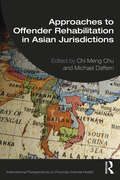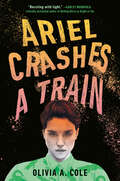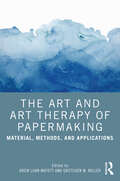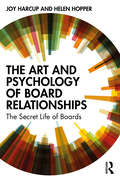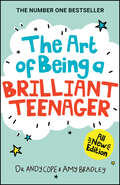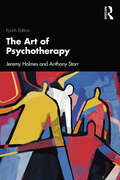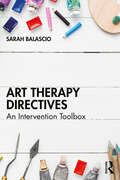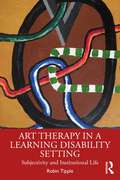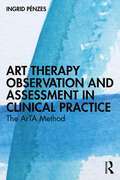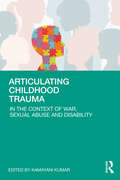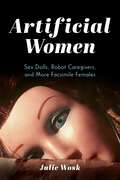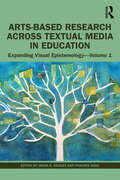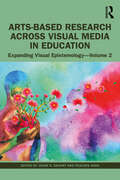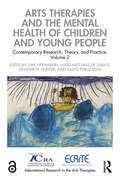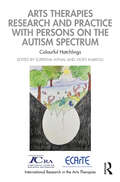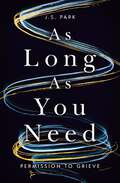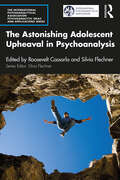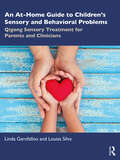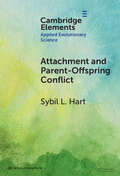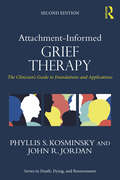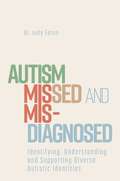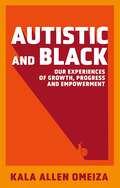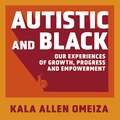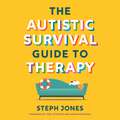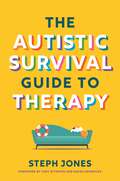- Table View
- List View
Approaches to Offender Rehabilitation in Asian Jurisdictions (International Perspectives on Forensic Mental Health)
by Chi Meng Chu Michael DaffernThis book aims to understand how Asian jurisdictions conceptualise rehabilitation within both the correctional and forensic mental health sectors.Little has been written about rehabilitation practices for people in criminal justice and forensic mental health services in Asia. Although there is some recognition of the need to develop and/or adjust rehabilitation practices for non-white/non-western peoples in Western jurisdictions, the extent to which Western-derived practices have been considered, adjusted, or adopted in Asian countries is not well known. This book includes contributions from an international team who explore the ways in which history, culture, religion, and resources impact how rehabilitation is conceptualised and offered in multiple Asian countries. It aims to provide an understanding of the relative merits of contemporary Western practices across different Asian countries and consider how these practices have been adopted and adapted within correctional and forensic mental health sectors.This book is essential for administrators who are developing rehabilitation strategies and for practitioners working with people who have a history of offending behaviour.
Ariel Crashes a Train
by Olivia A. Cole&“A gorgeously kind, wonderfully gentle, and unfailingly compassionate depiction of OCD...bursting with light.&”— Ashley Woodfolk, critically acclaimed author of NOTHING BURNS AS BRIGHT AS YOUExploring the harsh reality of OCD and violent intrusive thoughts in stunning, lyrical writing, this novel-in-verse conjures a haunting yet hopeful portrait of a girl on the edge. From the author of Dear Medusa, which New York Times bestselling author Samira Ahmed called &“a fierce and brightly burning feminist roar.&”Ariel is afraid of her own mind. She already feels like she is too big, too queer, too rough to live up to her parents' exacting expectations, or to fit into what the world expects of a &“good girl.&” And as violent fantasies she can&’t control take over every aspect of her life, she is convinced something much deeper is wrong with her. Ever since her older sister escaped to college, Ariel isn't sure if her careful rituals and practiced distance will be enough to keep those around her safe anymore. Then a summer job at a carnival brings new friends into Ariel&’s fractured world , and she finds herself questioning her desire to keep everyone out—of her head and her heart. But if they knew what she was really thinking, they would run in the other direction—right? Instead, with help and support, Ariel discovers a future where she can be at home in her mind and body, and for the first time learns there&’s a name for what she struggles with—Obsessive Compulsive Disorder—and that she&’s not broken, and not alone.
The Art and Art Therapy of Papermaking: Material, Methods, and Applications
by Drew Luan Matott Gretchen M. MillerThe Art and Art Therapy of Papermaking: Material, Methods, and Applications provides a comprehensive collection about the contemporary practices, media, and value of hand papermaking as social engagement, art therapy, and personal voice. Divided into three parts that highlight each of these areas, contributors explore topics such as advocacy, work with survivors, community outreach, medical challenges, and how papermaking can empower creative expression, stories of change, recovery, and reclamation to address trauma, grief and loss, social action, and life experiences. Previous books have covered hand papermaking or art therapy media as stand-alone subjects; this text is the first of its kind that unites and describes the convergence of papermaking in all these forms. Art therapists, art educators, and artists will find this book essential to their education about how papermaking can be a powerful process to make meaning for the self, groups, and community.
The Art and Psychology of Board Relationships: The Secret Life of Boards
by Joy Harcup Helen HopperThe relationships within boards can make or break an organisation, but well-functioning relationships take skill and effort to maintain. This book looks at the psychology behind individual and group behaviour and offers tactics and power tools to help make a success of your board career. The book shares advice and practical tips from 40 experienced board members from the worlds of corporates, the public sector and charities on how to spot and manage complex dynamics. And each chapter ends with techniques for unlocking tricky board relationships that you can put into practice immediately. The authors examine case studies and explore topics such as psychodynamics, cognitive behavioural psychology and neuroscience for insights into how boards react under pressure. They then demonstrate how to practise the ART of managing board relationships by increasing Awareness, Relating constructively to others, and choosing Tactics to ease tensions and foster collaboration. The Art and Psychology of Board Relationships: The Secret Life of Boards reveals why board relationships lie at the heart of organisational success – and how you can use them to gain competitive edge. It is essential reading for current and aspiring board members, coaches, facilitators and anyone with an interest in boardroom dynamics.
The Art of Being A Brilliant Teenager
by Andy Cope Amy BradleyThe BESTSELLING book on BEING A TEEN, now updated into an all new edition. In a world where there’s a lot of talk about ‘living your best life’ and being your ‘best self’, The Art of Being a Brilliant Teenager shows you how. The book has a strong academic underpinning (its DNA is taken from the author’s PhD) but is written in a fun and non-patronising way. The Art of Being a Brilliant Teenager is a book that prepares young people for REAL life; addressing modern issues of screen time and social media, as well as the teenage perennials of confidence, positivity, motivation and relationships. The book is built on a rock-solid foundation of wellbeing and human flourishing but is quirky in tone and entertaining to read. Dr Andy Cope’s words are brilliantly brought to life by award winning illustrator, Amy Bradley. The book includes activities and thought-provoking questions that encourage the user to interact with the material. Reflecting and journalling helps make the messages stick. Learn how to: Stay upbeat in a fast-paced world Be resilient and rise to life’s challenges Create strong relationships Conquer anxiety Tap into your values and use them to guide your life Shape your future The book has a deliberately light touch but is not light-weight. It doesn’t dodge the issues. In a world of rising anxiety, The Art of Being a Brilliant Teenager provides a personal upgrade to ‘world class’. It shows young people how to let go of bad habits and develop positive traits that will fire up their future. It covers themes of resilience, values, consumerism, purpose and communication, in a page-turning way. The Art of Being a Brilliant Teenager is THE go-to book to ease young people into adulthood.
The Art of Psychotherapy
by Jeremy Holmes Anthony StorrStorr’s The Art of Psychotherapy first appeared in 1979 and became an instant classic. After Storr’s death, a third edition was rewritten and revised by Jeremy Holmes, and this fourth edition is a further up-to-date iteration. Storr (1920–2001) and Holmes, both medical psychoanalytic psychotherapists, are ‘elders’ in the world of psychotherapy. Their eclectic, experienced and cultured voices offer students and psychotherapy practitioners clinical wisdom hard to find elsewhere. Their book expounds in a very practical way the issues entailed in setting up and maintaining a psychotherapeutic relationship and practice: how to introduce oneself, arrange one’s consulting room, establish a contract, when and how to make ‘interpretations'. The second half of the book deals with more general and often problematic issues, including how to align therapy in the light of diagnosis, working with ‘difficult’ patients, therapy termination, and the life course of a therapist, ending with a valedictory overview. In this fourth edition, Holmes has added a chapter on the scientific validation of psychotherapy, sections on tele- and e-therapy, non-binary gender and sexual identities and the impact of race and class on the therapeutic relationship. This engaging, accessible and profound book is essential reading for psychotherapists, counsellors, psychiatrists and mental health practitioners in training or practice.
Art Therapy Directives: An Intervention Toolbox
by Sarah BalascioArt Therapy Directives: An Intervention Toolbox is an all-inclusive manual of art therapy directives designed to be a comprehensive and organized resource for art therapists and other trained mental health professionals. Art therapy directives are directions for creating art and often require use of specific art media, both of which are tailored to the client’s particular need. Using this book, art therapists will be able to search by population, themes, and art media to find just the right project for their session whether working with individuals or in groups. Comprised of a compilation from traditional art therapy directives, the author’s own experiences, and other published practices, a wide range of mental health topics are included such as depression, self-esteem, life transitions, and trauma. Special consideration is given to populations like adolescents, older adults, veterans, and the LGBTQ+ community. This manual is the answer that many in the field of art therapy have been missing for an all-encompassing, organized reference book to guide art therapy sessions with a wide variety of client populations..
Art Therapy in a Learning Disability Setting: Subjectivity and Institutional Life
by Robin TippleThis book originates from the experience of providing Art Therapy for adults diagnosed with learning disabilities living in an institutional setting. It follows two longitudinal case studies in an attempt to understand dyadic relations in Art Therapy. Representing an important contribution to the history of Art Therapy, especially as it relates to the history of learning disabilities, this book explores past and contemporary discourses and contexts to identify a meaningful, thoughtful approach to the making and reading of images and the client/therapist relationship. It presents the thinking that informed the author’s practice at the time, from both the point of view of the time and its present moment, to contextualize contemporary Art Therapy practice. Through the storytelling of long-term Art Therapy cases with thoughtful investigation, the author explores themes of melancholia, abjection, and alienation, while also creating a depth to current practice. The chapters are richly illustrated, the two case studies are personal and compelling, and the writing is accessible to all readers. The book will appeal to practicing and training therapists of all persuasions, but especially those in Art Therapy or learning disability fields that have an interest in the visual forms of imagining and communicating.
Art Therapy Observation and Assessment in Clinical Practice: The ArTA Method
by Ingrid PénzesThis book describes ArTA, an evidence-based method for art therapy observation and assessment. This novel method argues the art-making process and art product are related to aspects of mental health. The results of the author’s own research show that observed patterns in material interaction, material experience, and the specific combinations of formal elements of the art product reveal the client’s balance between thinking and feeling, and adaptability. Divided into four sections, the book illustrates this research, theory, and application of the ArTA method using examples and case histories with clear frameworks that give guidance in art therapy observation and assessment. It provides direction for formulating treatment goals and drawing up appropriate treatment interventions. Intended for art therapy students and practicing art therapists, this methodology will challenge readers to rethink the relationship between a client’s interaction with art materials and their mental health.
Articulating Childhood Trauma: In the Context of War, Sexual Abuse and Disability
by Kamayani KumarThe volume addresses the pertinent need to examine childhood trauma revolving around themes of war, sexual abuse, and disability. Drawing narratives from spatial, temporal, and cultural contexts, the book analyses how conflict, abuse, domestic violence, contours of gender construction, and narratives of ableism affect a child’s transactions with society. While exploring complex manifestations of children’s experience of trauma, the volume seeks to understand the issues related to translatability/representation, of trauma bearing in mind the fact that children often lack the language to express their sense of loss. The book in its study of childhood trauma does a close exegesis of select literary pieces, drawings done by children, memoirs, and graphic narratives.Academicians and research scholars from the disciplines of childhood studies, trauma studies, resilience studies, visual studies, gender studies, cultural studies, disability studies, and film studies stand to benefit from this volume. The ideas that have been expressed in this volume will richly contribute towards further research and scholarship in this domain.
Artificial Women: Sex Dolls, Robot Caregivers, and More Facsimile Females
by Julie WoskWhat distinguishes humanity from artificial beings? What do constructed creatures tell us about ourselves? From sex dolls to Siri, talking Barbies to robotic mothers, Artificial Women explores the ways in which today's simulated females—both real and fictional—reflect and expose our own ideas about gender and female identity. Join Julie Wosk as she probes the realm of compliant sex workers, nurturing caretakers, genial servants, and rebellious creations in film, television, literature, art, photography, and current developments in robotics. These modern-day Galateas must embrace their own synthetic nature while also striving for authenticity and autonomy, all the while foregrounding gender stereotypes and changing perceptions of women and their roles. They embody the paradoxes and tensions that continue to arise in our increasingly simulated world, where the lines between the real and the virtual only continue to blur. As these "artificial women" become ever more lifelike, so too do the questions they raise become more provocative, and more illuminating of our own conceptions and conventions. Artificial Women pushes the boundaries of gender, sexuality, and culture studies to consider new digital technologies, artificial intelligences, and burgeoning simulations.
Arts-Based Research Across Textual Media in Education: Expanding Visual Epistemology - Volume 1
by Jason D. DeHart Peaches HashIn company with its sister volume, Arts-Based Research Across Textual Media in Education explores arts-based approaches to research across media, including film and comics-related material, from a variety of geographic locations and across a range of subdisciplines within the field of education. This first volume takes a textual focus, capturing process, poetic, and dramaturgical approaches. The authors aim to highlight some of the approaches that are not always centered in arts-based research. The contributors represent a variety of arts-based practices and methods, and they weave this marrying of artistic and scientific expertise and experience into the fabric of the chapters themselves. Authors from international contexts speak to the importance of utilizing artistic approaches for research processes. From multimodal field notes to poetic forms to the dramaturgical, chapters in this book represent steps forward in educational inquiry to bringing together both the creative and credible. The book includes multiple images and rich descriptions shared from the field. This first volume covers amongst other topics: co-created narratives, creative fiction in research, analytic portraits, dramatic representation, and critical poetic inquiry. It would be suitable for graduate students and scholars interested in qualitative inquiry and arts-based methods, in education and the social sciences.
Arts-Based Research Across Visual Media in Education: Expanding Visual Epistemology - Volume 2
by Jason DeHart Peaches HashIn company with its sister volume, this book explores arts-based approaches to research across media, including film and comics-related material, from a variety of geographic locations and across a range of subdisciplines within the field of education. This second volume has a focus exclusively on visual output and image-based research and methods. The book aims to highlight some of the approaches that are not always centered in arts-based research. The visual takes center stage as authors lead with comics-based representations, among other forms of arts-based inquiry. These chapters follow on from the first collection and serve to expand thinking about merging creative methods with analysis and exploration in the world of education. From mixtapes to the curatorial, these chapters showcase the ways in which scholars explore the multitude of human experiences. This second volume covers, among other topics: comics in qualitative research, visual journaling, multimodal fieldnotes and discourse, and creative visual outputs. It is suitable reading for graduate students and scholars interested in qualitative inquiry and arts-based methods, in education and the social sciences.
Arts Therapies and the Mental Health of Children and Young People: Contemporary Research, Theory, and Practice, Volume 2 (ISSN)
by Uwe Herrmann de Zárate, Margaret Hills Heather M. Hunter Salvo PitruzzellaThis second volume expands and develops the discussion on arts therapies begun in volume one on the field’s relationship with children and young people’s mental health, demonstrating further contemporary research within international contexts.The book responds to a resounding call to address children and young people’s mental health. It explores a unique mix of diverse arts modalities including art, music, dance, expressive arts, and drama, creating opportunities for discourse and discussion of how the different arts therapies cohere and relate to each other. Chapters are truly global in approach, ranging from schools in India to children’s hospices in the United Kingdom, refugee transit camps in Greece, and residential care programmes for LGBTQ+ youth in the United States. Discussions from Greece and Taiwan, and innovative research from Israel, Norway, and Scotland are also featured with reference to diverse social, political, and cultural contexts. Ultimately, chapters prioritise the links between research, theory, and practice, providing accessible and implication-led dialogue on contemporary issues.This book provides new insights into the expanding field of the arts therapies and will be of great interest to arts therapists as well as academics and students in the fields of arts therapies, social work, psychotherapy, health psychology, and education.
Arts Therapies Research and Practice with Persons on the Autism Spectrum: Colourful Hatchlings (International Research in the Arts Therapies)
by Supritha Aithal Vicky KarkouThis volume presents cutting-edge research and practice on Creative Arts Therapies or Arts Therapies for individuals on the autism spectrum of all ages, outlining the development of effective and accessible approaches to support the diverse needs of this client group. Consisting of 14 research-based chapters with contributions from over 30 authors from across the world, the book brings together research from art, music, drama, dance, movement and other forms of art therapies. The book demonstrates how arts therapies have evolved over the years to address the health and social care needs of people on the autism spectrum and their caregivers. Chapters explore the implications of arts therapies across a spectrum of needs in various settings and offer a comprehensive picture including a variety of research outcomes and therapeutic processes, and critiques both of existing practice and research methodologies. The book will be key reading for researchers, scholars and clinicians from dance movement therapy, music therapy, art therapy, dramatherapy and expressive arts therapies. It will also be of interest to post-graduate students and mental health professionals working with children, adults and families of individuals on the autism spectrum.
As Long as You Need: Permission to Grieve
by J. S. Park"A heartfelt invitation for grieving readers...An excellent resource for those working their way through loss." —Publishers Weekly, Starred ReviewVeteran hospital chaplain to the sick, dying, and bereaved, J.S. Park offers you both the permission and the process for how to grieve and heal at your own pace.In As Long As You Need, J.S. offers an honest and unrushed engagement with grief, decoding four types of grieving—spiritual, mental, physical, and relational—and offering compassionate self-care and soul-care along the way.If you are struggling to process loss, pain, or grief from the last few years or the last few minutes, J.S. is an experienced and deeply empathetic listener and grief catcher who has held the pain and questions of thousands of patients. While social and cultural narratives about grief are dominated by "letting go, moving on, or turning the page" in his nearly decade of service as a chaplain at a major hospital with a designated level one trauma center J.S. understands firsthand how rushing or suppressing grief only adds a suffocating layer of pain on top of the original wound.From his unique window into the stories of the ill, injured, dying, and their families, J.S. offers you:Permission to dismantle all too common myths about grief and replace them with a guilt-free and unrushed approach to navigating your losses.Encouragement for how entering grief, rather than avoiding it, leads to a hard but meaningful holding of your loss.Empathy and hope if you are struggling with a crisis of faith in the midst of grief.Recognition that grief spans a wide narrative of loss: loss of future, faith, mental health, worth, autonomy, connection, and loved ones.Affirmation that your grief is your own. While the DNA of grief might be universal to the human condition, how you experience and process grief is unique to you. From the ER to deliveries to deathbeds across every sort of illness and injury imaginable, J.S. Park has provided meaningful counseling for people in all walks of life and death. Now, through his book he wants to assure you that, while everybody else might rush past your pain, grief is the voice that says, take as long as you need.
The Astonishing Adolescent Upheaval in Psychoanalysis (The International Psychoanalytical Association Psychoanalytic Ideas and Applications Series)
by Roosevelt Cassorla Silvia FlechnerThis book brings together international contributors to share insight from their theoretical and clinical work with adolescents, considering the different psychopathological responses they see in adolescent patients and how these can be worked with in analysis.Each chapter addresses a specific topic, focusing on representing the clinical realities facing psychoanalysts in treating adolescents with different types of disturbances at the psychic level. They cover a range of situations and perspectives, including discussion of maternal violence, the erotic field, self-mutilation, and social withdrawal, with a core focus on issues affecting contemporary adolescents. Bringing together a vast range of experience, The Astonishing Adolescent Upheaval in Psychoanalysis presents a new approach which re-establishes the impact of the responses of significant objects in the impasses present in narcissistic suffering. This book will be of great interest to all psychoanalytic and psychodynamic clinicians working with adolescents.
An At-Home Guide to Children’s Sensory and Behavioral Problems: Qigong Sensory Treatment for Parents and Clinicians
by Linda Garofallou Louisa SilvaAn At-Home Guide to Children’s Sensory and Behavioral Problems gives a new perspective on sensory and behavior problems, one that sees those behaviors as stemming from a child’s immature sensory nervous system and regulation difficulties. This book offers an effective at-home intervention, the Qigong Sensory Treatment, that enlists a parent's attuned touch to address often overlooked sensory issues that underlie ‘problem’ behaviors and works to organize those sensory experiences to foster connection and the capacity for self-regulation. It introduces the reader to a new and clinically useful model to understand sensory development, the Early Childhood Self-regulatory Milestones which are critical to the emotional and behavioral health and regulation for all children. With clear step-by-step instructions, diagrams, and links to online instructional videos, it teaches parents how to successfully implement the daily QST hands-on routine. Unique to the treatment model is how it guides and focuses parents to easily recognize, interpret and respond to their child's shifting non-verbal body and behavioral responses and cues. An extensive workbook section navigates parents through a year-long process of learning and implementing QST at home. Weekly letters include those written by the authors, parents who share their own personal experiences with the routine and by QST Master Trainers who offer their years of experience and helpful tips. The 52 letters are timed to anticipate and answer typical questions or stumbling blocks that parents commonly encounter at key points, guiding them to success with their child’s sensory and behavior difficulties while making for happier and less-stressful times with their child. This guide will be indispensable to parents and clinicians looking to understand and more effectively work with their child’s developmental difficulties.
Attachment and Parent-Offspring Conflict: Origins in Ancestral Contexts of Breastfeeding and Multiple Caregiving (Elements in Applied Evolutionary Science)
by null Sybil L. HartThis Element builds on the mainstream theory of attachment and contemporary understanding of the environment of evolutionary adaptedness to address the origin and nature of infant-maternal bond formation. Sections 2 and 3 propose that attachment behaviors for protesting against separation and usurpation were compelled by infants' needs for close and undivided access to a source of breast milk, usually mothers, for three years to counter threats of undernutrition and disease that were the leading causes of infant mortality. Since these attachment behaviors would not have been presented unless they were compelled by maternal resistance, their arising is also attributed to parent-offspring conflict. Section 4 theorizes that the affectional nature of infant-maternal attachment originated within contexts of breastfeeding. Uniform and universal features of exclusive versus complementary breastfeeding, that could entail diverse experiences among multiple caregivers, may have shaped adaptations so that love relationships with mothers differ from those with nonmaternal caregivers.
Attachment-Informed Grief Therapy: The Clinician’s Guide to Foundations and Applications (Series in Death, Dying, and Bereavement)
by Phyllis S. Kosminsky John R. JordanAttachment-Informed Grief Therapy bridges the fields of attachment studies, thanatology, and interpersonal neuroscience, uniting theory, research, and practice to enrich our understanding of how we can help the bereaved. The new edition includes updated research and discussion of emotion regulation, relational trauma, epistemic trust, and much more. In these pages, clinicians and students will gain a new understanding of the etiology of problematic grief and its treatment, and will become better equipped to formulate accurate and specific case conceptualization and treatment plans. The authors also illustrate the ways in which the therapeutic relationship is crucially important – though largely unrecognized – element in grief therapy and offer guidelines for an attachment-informed view of the therapeutic relationship that can serve as the foundation of all grief therapy. Written by two highly experienced grief counselors, this volume is filled with instructive case vignettes and useful techniques that offer a universal and practical frame of reference for understanding grief therapy for clinicians of every theoretical persuasion.
Autism Missed and Misdiagnosed: Identifying, Understanding and Supporting Diverse Autistic Identities
by Judy EatonAutism presents in a multitude of different and highly nuanced ways - particularly as it intersects with variance in class, gender, race and age. Misunderstanding and misinformation around variant and differing presentations means that misdiagnosed individuals and those who do not receive a diagnosis at all are often failed by medical, education, social care and criminal justice systems. They are detained in inappropriate settings; don't receive beneficial therapeutic input; have their families accused of fabricated or induced illness (FII); are kept in prison or youth offending institutions longer than their original tariffs, and shockingly their life expectancy is often curtailed as a result. This comprehensive resource will help multidisciplinary professions to understand, contextualise, and better identify diverse autistic presentations. It includes an overview of the autism diagnostic process, an exploration of controversial and commonly confused diagnoses such as PDA, ODD, CD, ASPD, and BPD; discussions of best practice for investigating FII; and analysis of the specific challenges of autism diagnosis in relation to women and girls, BAME communities, schools, and the criminal justice system.
Autistic and Black: Our Experiences of Growth, Progress and Empowerment
by Kala Allen Omeiza"It's time we bring forward Black autistic pain points and celebrate the triumphs of ourselves, family members, and organizations that care for these individuals. Through following the real stories of others from around the world, I hope fellow Black and autistic individuals will be empowered to realize that being Black and autistic is enough."In this powerful insight into the lives of Black autistic people, Kala Allen Omeiza brings together a community of voices from across the world, spanning religions, sexuality and social economic status to provide a deep and rich understanding of what it means to be autistic and Black.Exploring everything from self-love and appreciation, to the harsh realities of police brutality, anti-Black racism, and barriers to care, as well as amplifying the voices of the inspiring advocates who actively work towards change, protection, and acceptance for themselves and others, this book is an empowering force, reminding you that as a Black autistic person, you are enough.
Autistic and Black: Our Experiences of Growth, Progress and Empowerment
by Kala Allen Omeiza"It's time we bring forward Black autistic pain points and celebrate the triumphs of ourselves, family members, and organizations that care for these individuals. Through following the real stories of others from around the world, I hope fellow Black and autistic individuals will be empowered to realize that being Black and autistic is enough."In this powerful insight into the lives of Black autistic people, Kala Allen Omeiza brings together a community of voices from across the world, spanning religions, sexuality and social economic status to provide a deep and rich understanding of what it means to be autistic and Black.Exploring everything from self-love and appreciation, to the harsh realities of police brutality, anti-Black racism, and barriers to care, as well as amplifying the voices of the inspiring advocates who actively work towards change, protection, and acceptance for themselves and others, this book is an empowering force, reminding you that as a Black autistic person, you are enough.
The Autistic Survival Guide to Therapy
by Steph JonesThe ultimate autistic survival guide to therapy"This is the book that would've saved me nine different therapists, decades of self-analysis, thousands of pounds, twelve different doctors and untold amounts of pain, frustration and trauma - in spending a lifetime looking for the right answers in the wrong places I've become an accidental expert."In this candid, witty and insightful exploration into therapy, Steph Jones uses her professional and lived experiences as a late diagnosed autistic woman and therapist, as well as consulting therapists from across the world and tapping into the autistic community, to create the ultimate autistic survival guide to therapy.Steph confronts the statistics, inadequate practices and ableist therapists head on and poses the questions of how we can make therapy neurodivergence-affirming and how to create safe spaces for autistic individuals. With strategic and practical advice to help recognise the 'red flags' of a dodgy therapist and provide a clear roadmap to finding your confidence and setting the appropriate boundaries with a new therapist, Steph has every question answered.To support therapists striving for inclusivity and a neurodiverse affirming practice, the inclusion of a context guide provides a deconstruction of each therapy session so you can recognise how undiagnosed (or diagnosed) autism may present itself during therapy and how you can start to explore this in the therapeutic space.(P) 2024 Jessica Kingsley Publishers
The Autistic Survival Guide to Therapy
by Steph Jones"This is the book that would've saved me nine different therapists, decades of self-analysis, thousands of pounds, twelve different doctors and untold amounts of pain, frustration and trauma - in spending a lifetime looking for the right answers in the wrong places I've become an accidental expert."In this candid, witty and insightful exploration into therapy, Steph Jones uses her professional and lived experiences as a late diagnosed autistic woman and therapist, as well as consulting therapists from across the world and tapping into the autistic community, to create the ultimate autistic survival guide to therapy.Steph confronts the statistics, inadequate practices and ableist therapists head on and poses the questions of how we can make therapy neurodivergence-affirming and how to create safe spaces for autistic individuals. With strategic and practical advice to help recognise the 'red flags' of a dodgy therapist and provide a clear roadmap to finding your confidence and setting the appropriate boundaries with a new therapist, Steph has every question answered.To support therapists striving for inclusivity and a neurodiverse affirming practice, the inclusion of a context guide provides a deconstruction of each therapy session so you can recognise how undiagnosed (or diagnosed) autism may present itself during therapy and how you can start to explore this in the therapeutic space.
